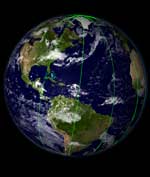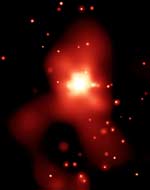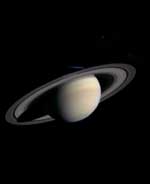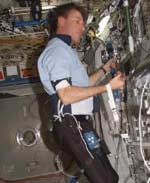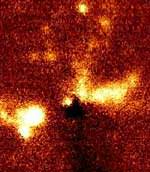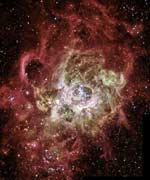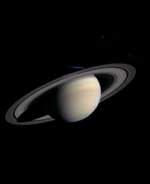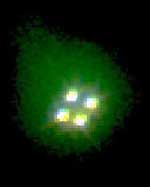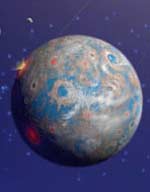
Image credit: NASA
According to a new simulation by a team of University of Washington astronomers, Earthlike worlds could be more common that previously believed. The team performed 44 computer simulations of planet formations near a star, and found that an Earth-sized world was created nearly every time – and a terrestrial planet was in the star’s habitable zone 25% of the time. The simulations also showed that the orbits of gas giants in a system might decide how much water remains on a terrestrial planet.
Astrobiologists disagree about whether advanced life is common or rare in our universe. But new research suggests that one thing is pretty certain ? if an Earthlike world with significant water is needed for advanced life to evolve, there could be many candidates.
In 44 computer simulations of planet formation near a sun, astronomers found that each simulation produced one to four Earthlike planets, including 11 so-called “habitable” planets about the same distance from their stars as Earth is from our sun.
“Our simulations show a tremendous variety of planets. You can have planets that are half the size of Earth and are very dry, like Mars, or you can have planets like Earth, or you can have planets three times bigger than Earth, with perhaps 10 times more water,” said Sean Raymond, a University of Washington doctoral student in astronomy.
Raymond is the lead author of a paper detailing the simulation results that has been accepted for publication in Icarus, the journal of the American Astronomical Society’s Division for Planetary Sciences. Co-authors are Thomas R. Quinn, a UW associate astronomy professor, and Jonathan Lunine, a professor of planetary science and physics at the University of Arizona.
The simulations show that the amount of water on terrestrial, or Earthlike, planets could be greatly influenced by outer gas giant planets like Jupiter.
“The more eccentric giant planet orbits result in drier terrestrial planets,” Raymond said. “Conversely, more circular giant planet orbits mean wetter terrestrial planets.”
In the case of our solar system, Jupiter’s orbit is slightly elliptical, which could explain why Earth is 80 percent covered by oceans rather than being bone dry or completely covered in water miles deep.
The findings are significant because of the discovery in recent years of a large number of giant planets such as Jupiter and Saturn orbiting other suns. The presence, and orbits, of those planets can be inferred from their gravitational interaction with their parent stars and their effect on light from those stars as seen from Earth.
It currently is impossible to detect Earthlike planets around other stars. However, if results from the models are correct, there could be planets such as ours around a number of other suns relatively close to our solar system. A significant number of those planets are likely to be in the “habitable zone,” the distance from a star at which the planet’s temperature will maintain liquid water on the surface. Liquid water is thought to be a requirement for life, so planets in a star’s habitable zone are ideal candidates for life. It is unclear, however, whether those planets could harbor more than simple microbial life.
The researchers note that their models represent the extremes of what is possible in forming Earthlike planets rather than what is typical of planets observed in our galaxy. For now, they said, it is unclear which approach is more realistic.
Their goal is to understand what a system’s terrestrial planets will look like if the characteristics of a system’s giant planets are known, Raymond said.
Quinn noted that all of the giant planets detected so far have orbits that carry them very close to their parent stars, so their orbits are completed in a relatively short time and it is easier to observe them. The giant planets observed close to their parent stars likely formed farther away and then, because of gravitational forces, migrated closer.
But Quinn expects that giant planets will begin to be discovered farther away from their suns as astronomers have more time to watch and are able to observe gravitational effects during their longer orbits. He doubts such planets will be found before they have completed whatever migration they make toward their suns, because their orbits would be too irregular to observe with any confidence.
“These simulations occur after their migration is over, after the orbits of the gas giants have stabilized,” he said.
The research is supported by the National Aeronautics and Space Administration’s Astrobiology Institute, its Planetary Atmospheres program, and Intel Corp.
Original Source: UW News Release

